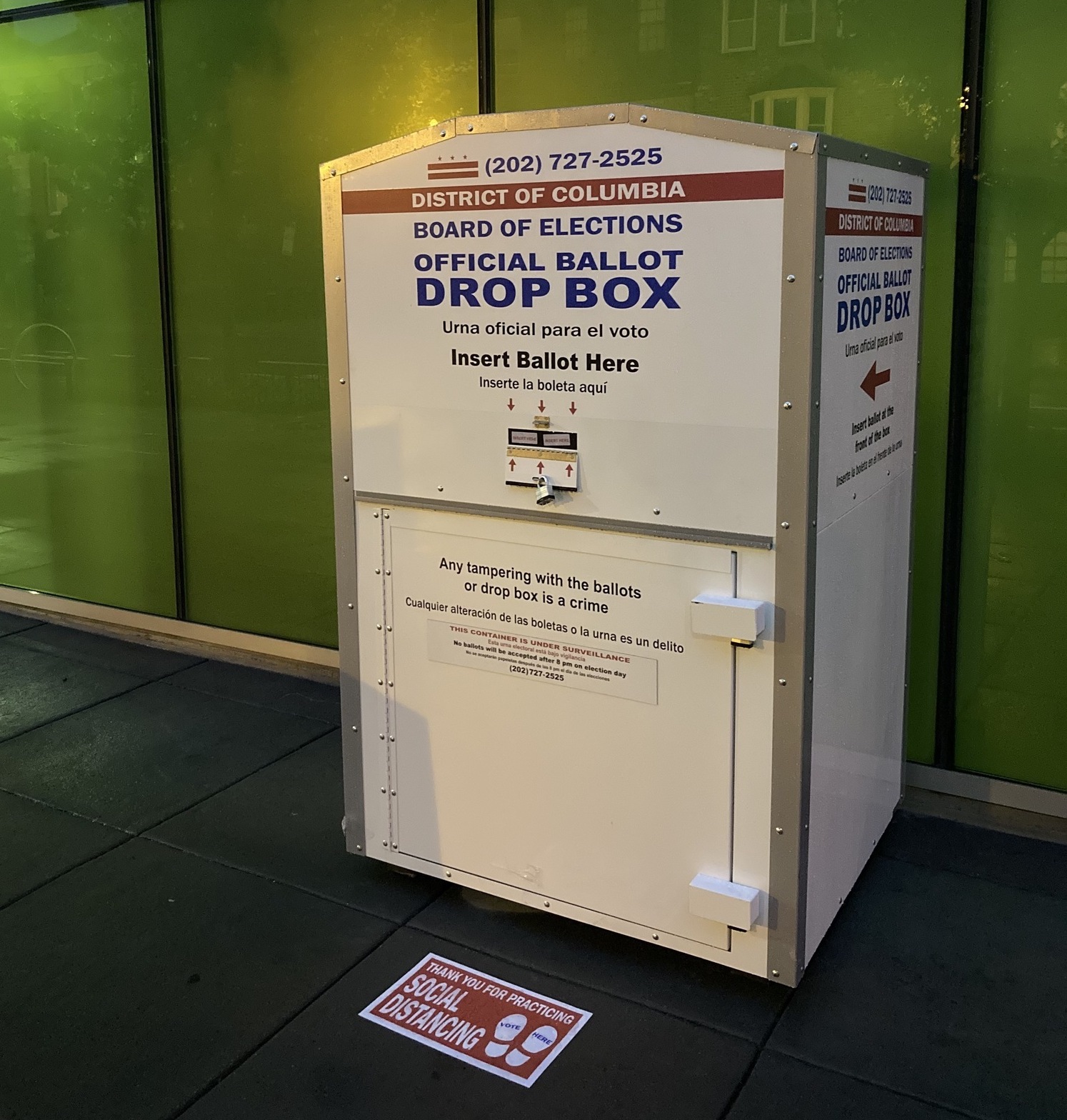Ballot Drop-Off Options in All 50 States
What are the state-to-state differences in ballot drop-off options?

Published by The Lawfare Institute
in Cooperation With

The 2020 general election has officially begun, and voters around the country are beginning to receive absentee ballots. Some voters will mail their completed ballots back to election officials (ideally by Oct. 27, according to U.S. Postal Service guidelines). Other voters will drop off their ballots at secure ballot drop boxes, and many states have installed more of these drop-off receptacles during the coronavirus pandemic. Still other voters will opt to hand their ballots directly to election officials, drop them off at early voting centers or polling places on Election Day, or even ask family members or other agents to drop off their ballots on their behalf. These choices are often dictated by the idiosyncrasies of each state’s voting rules and procedures: 50 states have 50 sets of rules, and different options are available to voters depending on the election rules that govern them.
America’s state-based voting laws are complicated, and the Stanford-MIT Healthy Election Project has compiled information on all 50 states (and Washington, D.C.) to help explain the state-to-state differences in ballot drop-off options. Our analysis uses secretary of state websites, other official government documents, phone calls and emails to election officials, and local media reports to answer the following four questions for each state:
- Does the state have ballot drop boxes available?
- Can voters drop off completed ballots at in-person early voting sites?
- Can voters drop off completed ballots at polling places on Election Day?
- Can voters drop off completed ballots at other locations (including election offices, court houses and so on)?
For more information, please see our full analysis spreadsheet here and our memorandum here.
Ballot Drop Box Availability
In 2020, just 10 states will not offer ballot drop boxes for voters. Created by author using mapchart.net.
Only eight states—Arizona, California, Colorado, Hawaii, Montana, New Mexico, Oregon and Washington state—have explicit language about ballot drop boxes written into their laws. However, many more states provide ballot drop boxes or otherwise permit counties and other election officials to place ballot drop boxes for voters to use. All told, 40 states (and Washington, D.C.) will have ballot drop boxes available in one or more locations in 2020, while just 10 states will not have drop boxes. Due to the coronavirus response, the use of ballot drop boxes during the 2020 general election will likely be the largest in American history.
Ballot Drop-Off During Early Voting
In 2020, more than 30 states will allow voters to drop off completed ballots to election officials during in-person early voting. Created by author using mapchart.net.
Thirty-one states (and Washington, D.C.) have an in-person early voting period and allow voters to return completed absentee ballots to early voting locations. Sixteen states do not have early voting at all or do not permit voters to drop off completed absentee ballots at early voting locations. In Texas, for example, voters can vote early in person, but completed absentee ballots must be returned by mail or to the county clerk’s office with a valid ID. Three states have varied options for ballot drop-off by locality. For example, in Multnomah County, Oregon, the county’s election building includes a 24-hour drop box as well as a drive-up option and availability for in-person drop-off. Vermont’s drop-off options depend on each town clerk’s office hours, and Utah’s options include a combination of 24-hour boxes and, in some places, in-person locations. Please see our full report for more information.
Ballot Drop-Off at Election Day Polling Places
In 2020, more than 20 states will allow voters to drop off completed ballots at polling places on Election Day. Created by author using mapchart.net.
Twenty-one states (and Washington D.C.) allow voters to drop off completed absentee ballots on Election Day at in-person polling locations or voting centers. In some of these states—such as California—voters can drop off completed ballots at any polling place in their county on Election Day, and often these voters are able to avoid the usual in-person voting lines. Twenty-seven states do not permit voters to drop off completed ballots at polling places on Election Day. Instead, in some of these states—such as Pennsylvania—the ballots must be voided at the polling place (essentially “thrown out” so that the voter can get a blank ballot), and voters must use a traditional ballot to cast their vote. Two states, Oregon and Vermont, have Election Day ballot drop-off options that vary by locality.
Ballot Drop-Off at Election Offices or Other Locations
In 2020, just three states do not provide alternative drop-off locations or allow hand-delivery of ballots. Created by author using mapchart.net.
Forty-five states (and Washington, D.C.) allow voters to drop off completed absentee ballots at an alternative location, often any time between the start of early voting (or upon receipt of the absentee ballot) and Election Day itself. The most common alternative drop-off location is the county’s election office or county clerk, but other acceptable locations include the county absentee election manager’s office (in Alabama), the town clerk’s office (in Connecticut), and at a voter’s town hall or city hall (in Massachusetts), among other locations. In three states, Kentucky, Mississippi, and Tennessee, voters are not permitted to hand-deliver completed ballots at all. In two states, Florida and Nevada, alternative locations vary by county.
During the coronavirus pandemic, voters in most states will have many options to return their completed ballots before or on Election Day. For more information about your state’s drop-off policies, please see our full analysis spreadsheet here.








